Themed collection Nickel in biology

Nickel in Biology
This editorial introduces the Nickel in Biology themed issue for Metallomics, guest edited by Deborah Zamble.
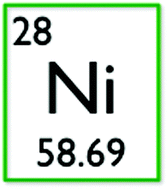
Metallomics, 2015,7, 588-589
https://doi.org/10.1039/C5MT90013A
Designing metallodrugs with nuclease and protease activity
The application of metals in medicine has evolved over the years since the days of alchemists to the present novel concept of catalytic metallodrugs with nuclease and protease activity. It is projected that in the near future catalytic metallodrugs should play key roles in the emerging area of personalized medicine.
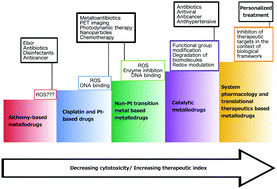
Metallomics, 2016,8, 1159-1169
https://doi.org/10.1039/C6MT00133E
Nickel-responsive transcriptional regulators
The structural features, metal coordination modes and metal binding thermodynamics of known Ni(II)-dependent transcriptional regulators are highlighted and discussed.
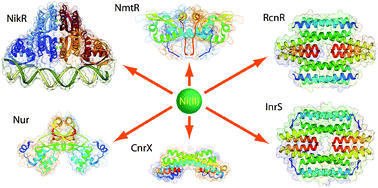
Metallomics, 2015,7, 1305-1318
https://doi.org/10.1039/C5MT00072F
Nickel recognition by bacterial importer proteins
Nickel recognition for microbial import exhibits coordination features distinct from other cellular functions.
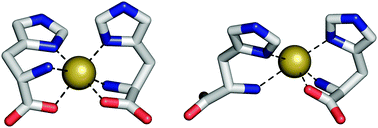
Metallomics, 2015,7, 590-595
https://doi.org/10.1039/C4MT00310A
Analytical approaches for the characterization of nickel proteome
Analytical strategies to study the nickel proteome and their advantages and limitations.
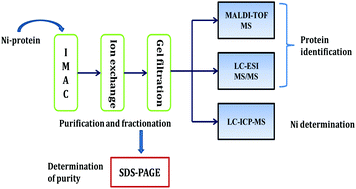
Metallomics, 2017,9, 1014-1027
https://doi.org/10.1039/C7MT00054E
Mechanisms of nickel toxicity in microorganisms
Nickel inhibits microbial enzymes (substituting for the normal metal or binding to catalytic/secondary sites) and indirectly creates reactive oxygen species.
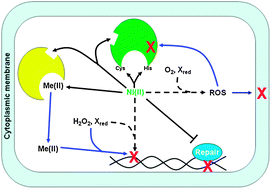
Metallomics, 2011,3, 1153-1162
https://doi.org/10.1039/C1MT00063B
Interaction of SlyD with HypB of Helicobacter pylori facilitates nickel trafficking
HpSlyD interacts with HpHypB through its insert-in-flap (IF) domain and delivers Ni2+ to HpHypB, which induces the dimerization of HpHypB and enhances its GTPase activity.
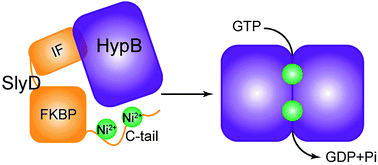
Metallomics, 2013,5, 804-807
https://doi.org/10.1039/C3MT00014A
The CO dehydrogenase accessory protein CooT is a novel nickel-binding protein
In Rhodospirillum rubrum, maturation of Carbon Monoxide Dehydrogenase (CODH) requires three accessory proteins, CooC, CooT and CooJ, dedicated to nickel insertion into the active site, which constitutes a distorted [NiFe3S4] cubane coordinated with a mononuclear Fe site.
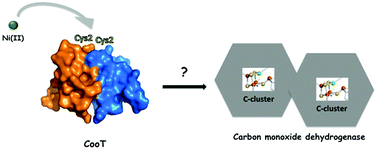
Metallomics, 2017,9, 575-583
https://doi.org/10.1039/C7MT00063D
High-affinity metal binding by the Escherichia coli [NiFe]-hydrogenase accessory protein HypB is selectively modulated by SlyD
SlyD activates the release of nickel and blocks the release of zinc from the high-affinity metal site of HypB.
![Graphical abstract: High-affinity metal binding by the Escherichia coli [NiFe]-hydrogenase accessory protein HypB is selectively modulated by SlyD](/en/Image/Get?imageInfo.ImageType=GA&imageInfo.ImageIdentifier.ManuscriptID=C7MT00037E&imageInfo.ImageIdentifier.Year=2017)
Metallomics, 2017,9, 482-493
https://doi.org/10.1039/C7MT00037E
Integration of fluorescence imaging with proteomics enables visualization and identification of metallo-proteomes in living cells
“Metal-tunable” fluorescent probe for tracking and editing metalloproteomes inside living cells.
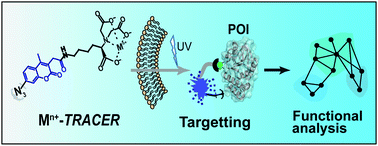
Metallomics, 2017,9, 38-47
https://doi.org/10.1039/C6MT00169F
Ni induces the CRR1-dependent regulon revealing overlap and distinction between hypoxia and Cu deficiency responses in Chlamydomonas reinhardtii
Combinatorial genome-wide analyses of transcriptome changes in response to genetic mutation and environmental perturbations give insight into a network of oxygen, copper and nickel signaling.
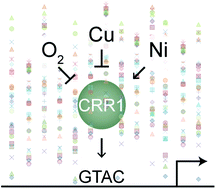
Metallomics, 2016,8, 679-691
https://doi.org/10.1039/C6MT00063K
[NiFe]-hydrogenases revisited: nickel–carboxamido bond formation in a variant with accrued O2-tolerance and a tentative re-interpretation of Ni-SI states
Novel Ni-coordination in a [NiFe]-hydrogenase mutant and possible coexistence of hydride and sulfenic acid in the WT Ni-SIb state.
![Graphical abstract: [NiFe]-hydrogenases revisited: nickel–carboxamido bond formation in a variant with accrued O2-tolerance and a tentative re-interpretation of Ni-SI states](/en/Image/Get?imageInfo.ImageType=GA&imageInfo.ImageIdentifier.ManuscriptID=C4MT00309H&imageInfo.ImageIdentifier.Year=2015)
Metallomics, 2015,7, 710-718
https://doi.org/10.1039/C4MT00309H
Synthesis of nickel–iron hydrogenase in Cupriavidus metallidurans is controlled by metal-dependent silencing and un-silencing of genomic islands
In Cupriavidus metallidurans disturbed metal homeostasis silences catabolic metabolic genomic islands (CMGIs) containing genes for nickel-dependent hydrogenases. This situation is reverted in a ΔzupT mutant.
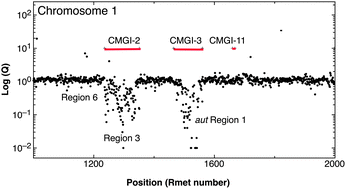
Metallomics, 2015,7, 632-649
https://doi.org/10.1039/C4MT00297K
Regulation of a nickel–cobalt efflux system and nickel homeostasis in a soil actinobacterium Streptomyces coelicolor
In nickel-tolerant Streptomyces coelicolor, a highly nickel-sensitive regulator (Nur) for nickel uptake systems and an extremely insensitive regulator (NmtR) for a nickel efflux pump constitute the nickel homeostasis system.
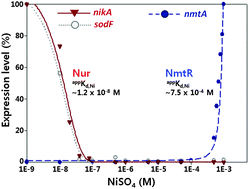
Metallomics, 2015,7, 702-709
https://doi.org/10.1039/C4MT00318G
Rhizobium leguminosarum HupE is a highly-specific diffusion facilitator for nickel uptake
Functional and topological analysis of Rhizobium leguminosarum HupE, the founding member of the HupE/UreJ family of nickel permeases, provides new hints on how bacteria manage nickel provision for metalloenzyme synthesis.
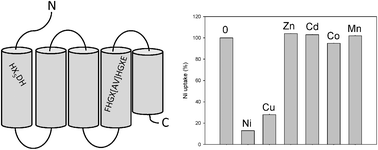
Metallomics, 2015,7, 691-701
https://doi.org/10.1039/C4MT00298A
SlyD-dependent nickel delivery limits maturation of [NiFe]-hydrogenases in late-stationary phase Escherichia coli cells
The metallochaperone SlyD is essential for nickel delivery to hydrogenase in stationary phase E. coli cells.
![Graphical abstract: SlyD-dependent nickel delivery limits maturation of [NiFe]-hydrogenases in late-stationary phase Escherichia coli cells](/en/Image/Get?imageInfo.ImageType=GA&imageInfo.ImageIdentifier.ManuscriptID=C5MT00019J&imageInfo.ImageIdentifier.Year=2015)
Metallomics, 2015,7, 683-690
https://doi.org/10.1039/C5MT00019J
Response of CnrX from Cupriavidus metallidurans CH34 to nickel binding
Atomic-resolution structures illustrate how Ni(II) sensing by CnrXs proceeds by conformational selection to prime signal propagation.
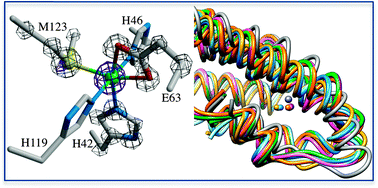
Metallomics, 2015,7, 622-631
https://doi.org/10.1039/C4MT00293H
Novel insights into nickel import in Staphylococcus aureus: the positive role of free histidine and structural characterization of a new thiazolidine-type nickel chelator
Staphylococcus aureus possesses two canonical ABC-importers dedicated to nickel acquisition: the NikABCDE and the CntABCDF systems, active under different growth conditions.
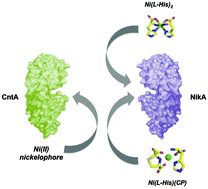
Metallomics, 2015,7, 613-621
https://doi.org/10.1039/C4MT00295D
Dynamic HypA zinc site is essential for acid viability and proper urease maturation in Helicobacter pylori
HypA structural Zn site mutants affect acid survival of Helicobacter pylori.
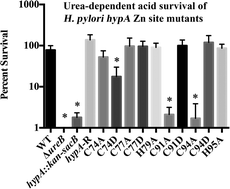
Metallomics, 2015,7, 674-682
https://doi.org/10.1039/C4MT00306C
Ni(II) ions cleave and inactivate human alpha-1 antitrypsin hydrolytically, implicating nickel exposure as a contributing factor in pathologies related to antitrypsin deficiency
Ni(II) ions cleave AAT hydrolytically, inactivating the protein.
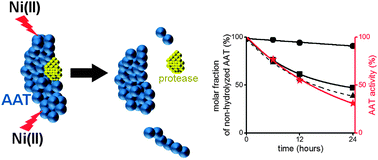
Metallomics, 2015,7, 596-604
https://doi.org/10.1039/C4MT00316K
Modulating glyoxalase I metal selectivity by deletional mutagenesis: underlying structural factors contributing to nickel activation profiles
Switching between the two metal activation classes of glyoxalase I by protein engineering using deletional mutagenesis.
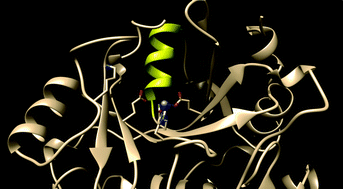
Metallomics, 2015,7, 605-612
https://doi.org/10.1039/C4MT00299G
Nickel-responsive regulation of two novel Helicobacter pylori NikR-targeted genes
The Helicobacter pylori transcription factor NikR represses two novel gene targets in a nickel-dependent manner.

Metallomics, 2015,7, 662-673
https://doi.org/10.1039/C4MT00210E
A new insight into the role of intracellular nickel levels for the stress response, surface properties and twitching motility by Haemophilus influenzae
Nickel homeostasis in Haemophilus influenzae is tightly coupled to planktonic-sessile lifestyle switch.
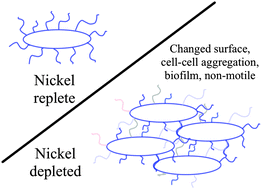
Metallomics, 2015,7, 650-661
https://doi.org/10.1039/C4MT00245H
Nickel translocation between metallochaperones HypA and UreE in Helicobacter pylori
Direct in vitro and in vivo evidence as well as molecular details of nickel translocation mediated by HypA–UreE interaction.

Metallomics, 2014,6, 1731-1736
https://doi.org/10.1039/C4MT00134F
Sinorhizobium meliloti Nia is a P1B-5-ATPase expressed in the nodule during plant symbiosis and is involved in Ni and Fe transport
Biochemical characterization of a P1B-5-ATPase suggests that this subfamily is involved in Ni2+ and Fe2+ transport.
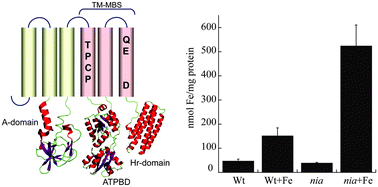
Metallomics, 2013,5, 1614-1623
https://doi.org/10.1039/C3MT00195D
Putative cobalt- and nickel-binding proteins and motifs in Streptococcus pneumoniae
Cobalt and nickel metalloproteome is involved in protein metabolism, carbonhydrate metabolism and gene expression regulation. Co- and Ni-binding motifs H(X)nH, M(X)nH and H(X)nM are identified.
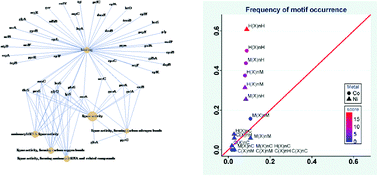
Metallomics, 2013,5, 928-935
https://doi.org/10.1039/C3MT00126A
Pseudomonas putida KT2440 response to nickel or cobalt induced stress by quantitative proteomics
Nickel and cobalt are obligate nutrients for the gammaproteobacteria but when present at high concentrations they display toxic effects.

Metallomics, 2013,5, 68-79
https://doi.org/10.1039/C2MT20147J
Identification of Ni-(L-His)2 as a substrate for NikABCDE-dependent nickel uptake in Escherichia coli
The results described here identify the first nickel complex, Ni-(L-His)2, that is imported by microbes.
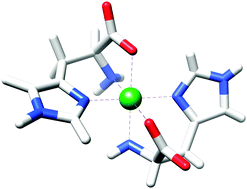
Metallomics, 2012,4, 1043-1050
https://doi.org/10.1039/C2MT20139A
The influence of calcium ions on nickel modulation of NMDA receptor currents
Nickel increases the current activated by glutamate in NMDA receptors containing the subunit GluN2B and this potentiation is dependent on external Ca2+ demonstrating that divalent cations influence each other in the modulation of NMDA receptor function.
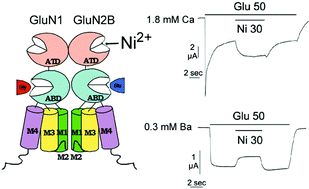
Metallomics, 2011,3, 1376-1383
https://doi.org/10.1039/C1MT00097G
A novel nickel responsive MerR-like regulator, NimR, from Haemophilus influenzae
The novel MerR-like regulator NimR from Haemophilus influenzae regulates nickel uptake and this controls urease activity.
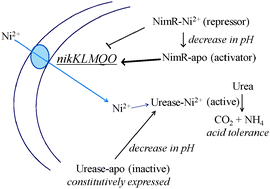
Metallomics, 2011,3, 1009-1018
https://doi.org/10.1039/C1MT00127B
About this collection
This collection of papers brings together recent activities in the nickel biosciences. This list was initially composed of articles published in a themed issue of Metallomics (7, 2015, guest edited by Deborah Zamble) that highlighted emerging high-impact areas of research on the roles and distribution of nickel in biology. Since then, this collection has expanded and will continue to grow to include additional reports in this field, covering various aspects of this important area of metal biology. New articles will be added to this collection as they are published.
Also of interest
The Biological Chemistry of Nickel
Editors: Deborah Zamble, Magdalena Rowińska-Żyrek and Henryk Kozlowski
Nickel is an essential element in many biochemical processes and there has been significant research into understanding in great depth the role that this transition element plays. This book provides a comprehensive review of the latest findings in nickel biology, covering the function, biochemistry, toxicology and medical applications of nickel systems. Written by internationally leading experts in nickel biology and chemistry research, this book is an essential reference for bioinorganic chemists, biochemists, biologists and medicinal chemists.